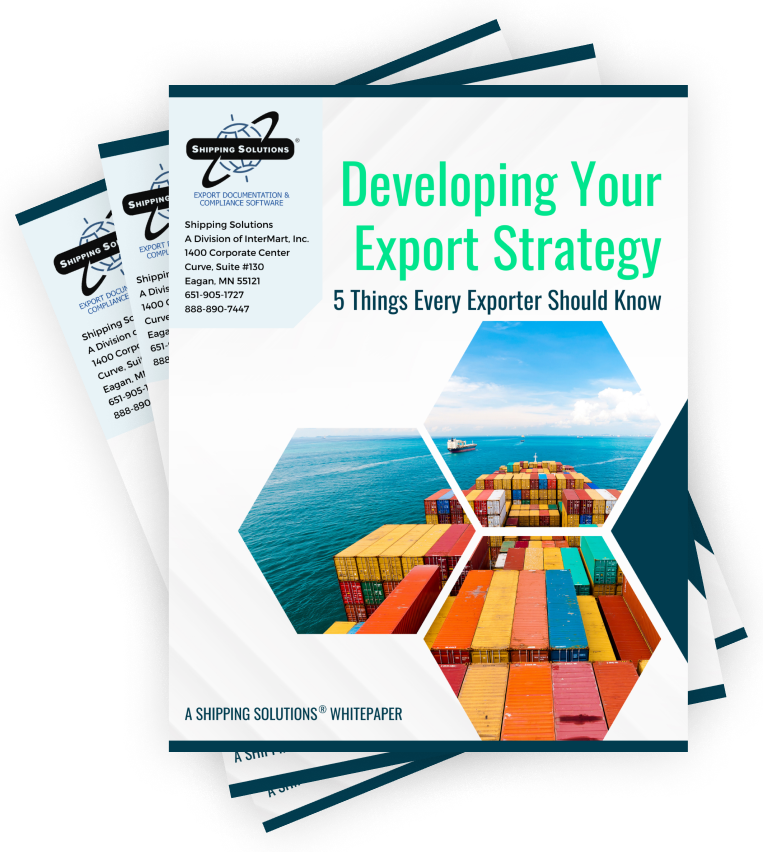The International Trade Blog Export Forms
15 Steps for Properly Responding to an Export Sales Inquiry
On: July 8, 2016 | By:  Joseph A. Robinson |
4 min. read
Joseph A. Robinson |
4 min. read
 A sale often begins when a company receives an inquiry from a potential customer. Most sellers typically reply with a sales proposal or quote or a proforma invoice. Unfortunately, companies too often respond to these inquiries without much thought, which can result in problems down the road, particularly if this inquiry represents a potential export sale.
A sale often begins when a company receives an inquiry from a potential customer. Most sellers typically reply with a sales proposal or quote or a proforma invoice. Unfortunately, companies too often respond to these inquiries without much thought, which can result in problems down the road, particularly if this inquiry represents a potential export sale.
Successful exporters have internal procedures in place to ensure they respond in a way that will result in a successful export transaction. (And that includes getting paid!)
Utilizing a Proforma Invoice
Your sales offer or export proforma invoice is a multi-purpose document that affects many departments within your company. It sets the stage for several steps of the international sales process by providing company information, product descriptions, pricing, payment, and shipment and delivery terms. It also defines the responsibilities of the buyer, seller, carrier, forwarder and bank. In addition, the buyer often uses the sales offer to secure foreign exchange and an import license.
In international business, communications can always become a problem, but communication is also the solution. Your sales offer or performa invoice should include simple and clear information about your offer's details. For more details about the proforma invoice, check out the article, How Does the Proforma Invoice Fit in the Sales Process?
Responding to an Export Sales Inquiry
Before you respond to sales inquiry, following these 15 steps can help ensure a success outcome of your export sale:
Step 1
Study and understand the details of the inquiry to anticipate and provide exactly what is requested and needed.
Step 2
Conduct due diligence to screen whether or not the inquiry is coming from a company or organization on any of the restricted parties lists, and make sure it is a bona fide potential customer who is financially capable of purchasing your product(s).
Step 3
Thank the inquirer for requesting the RFQ or PFI.
Step 4
Provide a positive statement about your company, the quality of your products and services, and your reliability as a preferred supplier to your existing customers.
Step 5
Respond as quickly as possible to the inquiry. If you need time to generate technical information from your engineering, design or production department, then respond immediately that the RFQ or PFI will be forthcoming shortly based on input from your technical or production staff.
Step 6
Inform the buyer of the type(s) and quantities of goods to be sent, their value, and important specifications such as weight, dimensions and similar details.
Step 7
Do not use idioms or shop talk that is not readily understood by people outside your industry. Keep in mind that people unfamiliar with technical jargon such as freight forwarders, carriers and bankers might not understand or misinterpret what you are talking about.
Step 8
Provide sufficient information and details in your proposal to serve all parties who may be involved in using information for their portion of the overall international transaction and process. This refers to the purchasing department of your potential customer, the technical department, banker, freight forwarder, government officials (export/import customs officers, etc.) and carrier personnel.
Step 9
Create your offer in such a manner that you position your company in the most advantageous negotiating situation possible.
Step 10
Provide information that helps your overseas customer open a Letter of Credit using Incoterms 2010 to your advantage. Provide adequate lead times and sufficient product or service details.
Step 11
Clearly state any time constraints of your offer. You may wish to use a statement such as: “The price and terms of this offer are valid for 60 days from the date of this proposal.”
A statement that I used based on many years of experience is: “The product(s) based on this proposal are available for shipment 60 days from receipt and acknowledgement of your order.” Of course, the actual number of days depends on your business and industry.
Step 12
List all additional costs included in the quote separate from the cost of the product. For example, ocean packaging, handling fees, consular fees, inland freight, ocean/air freight, insurance, fuel surcharge, document preparation, and other charges. Do not combine these separate charges into one catch-all price category. If you do, you may price yourself out of the market or handicap your negotiating position.
Step 13
For compliance purposes include the desintation control statement. As of November 15, 2016, there is a new single destination control statement to use regardless if your products fall under the jurisdiction of the Commerce Department or State Department:
These items are controlled by the U.S. Government and authorized for export only to the country of ultimate destination for use by the ultimate consignee or end-user(s) herein identified. They may not be resold, transferred, or otherwise disposed of, to any other country or to any person other than the authorized ultimate consignee or end-user(s), either in their original form or after being incorporated into other items, without first obtaining approval from the U.S. government or as otherwise authorized by U.S. law and regulations.
Step 14
Personally sign and use your appropriate title in order to authenticate your offer.
Step 15
If you email the sales proposal or proforma invoice to your potential customer, decide whether a hard copy original on your letterhead is needed. If yes, send it by airmail promptly.
Be sure to check out the follow-up article to this checklist: The Export Proforma Invoice: Validity, Acceptance and Price.
This post was originally published in March 2003 and has been updated to include current information, links and formatting.
Like what you read? Subscribe today to the International Trade Blog to get the latest news and tips for exporters and importers delivered to your inbox.

About the Author: Joseph A. Robinson
Joe Robinson has 43 years hands-on experience in global commerce targeting new markets highlighting investment opportunities. He is an author, has lived abroad 4 times; traveled to 81 countries and exported to 105 countries in both private corporations and in government positions. He is currently a consultant to companies, government agencies and universities providing guidance in export procedures, regulatory control and compliance.
He graduated from Virginia Tech with a BS in Economics and Master of International Management from the Thunderbird School of Global Management. He was 1 of 5 Americans to receive a full Japanese government scholarship to study International Market Research at Keio University in Tokyo, the leading Business School in Asia.
Joe was the International Trade Manager for the State of Virginia providing assistance for export management, marketing and best business practices covering export control support and compliance training and procedures manuals and led many overseas businesses and delegation trade missions to Asia, Europe, the Middle East and Latin America



